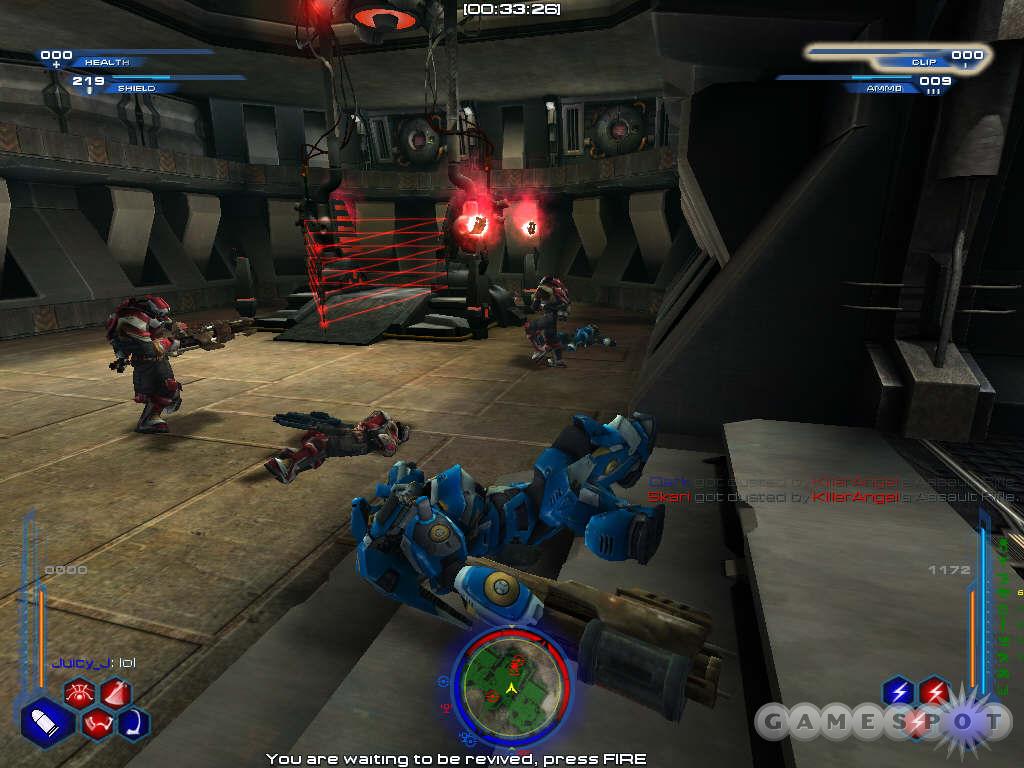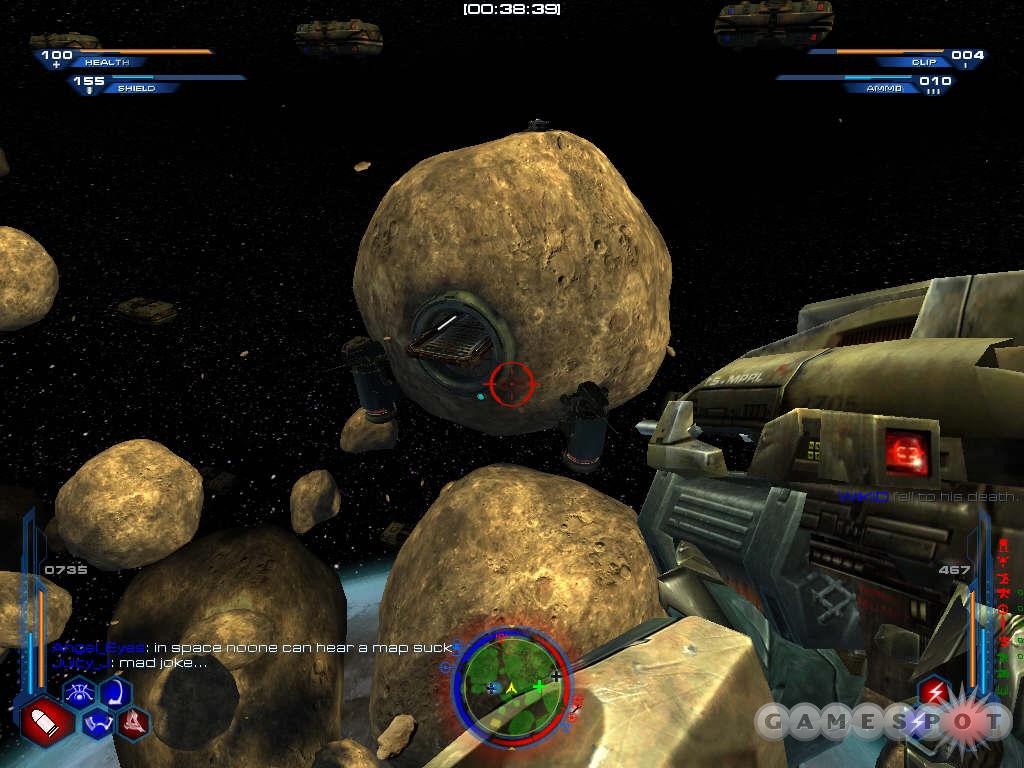When Unreal II: The Awakening was first released in early 2003, it failed to meet the lofty expectations of critics and fans. Part of the disappointment stemmed from a short, lackluster single-player campaign, a problem that was compounded by the absence of any multiplayer modes. In response to the criticism, Atari has rereleased Unreal II in a new "special edition" package that includes both the single-player campaign and a team-based multiplayer mode called "XMP" (which is available as a free download for those who already own Unreal II). The new XMP mode isn't all that original, but it offers a solid gameplay experience.

There's only one gameplay mode in XMP, and it's a take on the quintessential capture-the-flag mode. Instead of capturing flags for points, the goal in XMP is to gather artifacts. Each team starts a match with two of four artifacts in its base. The first team to capture and possess all four artifacts simultaneously is the winner. Before spawning into the game, you'll choose to be one of three different classes: ranger, tech, or gunner. Each of the three classes is prebuilt with a specific kit of weaponry and items--the game doesn't allow for mixing and matching, nor can you pick up weapons from dead enemies or comrades. All three can revive a fallen teammate in the field (though only the rangers can restore teammates to full health), and all classes have the ability to fly a short distance using jetpacks. As in the Tribes games, the jetpacks come into play when you're dueling with an opponent and when you need to transport yourself across the map.
All three classes have distinct roles. The ranger acts as a combination of the traditional medic and sniper classes, with the ability to heal teammates and attack from extremely long range using the sniper rifle. The magnum pistol and shock lance are the ranger's backup weapons. Though the ranger is the flimsiest class, it's also the fastest, and its smoke grenades can prove quite effective at providing cover when used by a skilled player. The tech acts as the basic soldier and engineer, carrying easy-to-use weapons like the assault rifle and shotgun, as well as kits for deploying force fields and automated defense turrets. Techs can also repair a teammate's shields. The final class is the gunner, who compensates for his slow speed by having the thickest shields and the heaviest weapons, including a rocket launcher, a flamethrower, and mines.
Though the game may seem simple with just three fixed classes to choose from, Unreal II XMP is actually fairly complicated and offers significant depth. Littered around the maps are a variety of fixtures, including energy generators, spawn points, vehicle spawns, and manned turrets. These pieces of machinery can be captured and are of great strategic importance. Energy generators supply each team with power to operate key base machinery and deployables. Without enough power, your automated defenses and manned turrets can go offline, making them inoperable. The struggle for energy becomes a key subplot in each match as both teams try to balance how many turrets and force fields they can afford to deploy. Coordinated teams will send out strike forces to seize enemy-controlled generators just before an assault on the enemy artifact node, in order to pave the way to an easier capture. Wrestling over spawn points placed in the middle of maps is also a key part of each match. As in Battlefield 1942, having control of all the spawn points in Unreal II XMP can pin the opponents in their base and allow your team to apply heavy pressure.
It seems overwhelming at first to try to keep track of so many different aspects of battle. Within seconds, you can go from dominating all the generators to having an energy crisis. Forward spawn points you thought your team had locked down can swing back to the other team instantly. Once you get acclimated to the interface, you'll appreciate the way the battle flows from one area to the next as each team probes the other for weaknesses. However, it's still important to remember that Unreal II XMP is like any other team-based multiplayer shooter; the quality of the gameplay is directly related to the experience level of the other players and how willing they are to work as a team. To encourage teamwork, the scoring system in XMP is strictly points-based. You still gain points for fragging enemies, but no specific kill count appears on the scoreboard. This style of scoring encourages players to do more dirty work, such as escorting artifact carriers, capturing generators, and playing defense, all of which are rewarded appropriately by the points system.

Though there are only eight maps in the game, almost all of them are very well designed and fun to play. Bases always have multiple approach points from either a wide landscape or via underground passageways. Key areas such as generators and spawn points are scattered thoughtfully around the map, making it nearly impossible for one team to defend everything. Even in 30-player games, there's always going to be a weak point in your opponent's strategy. There's simply too much area and not enough men to cover all the generators and spawn points and to defend the artifact node.
One might assume that the large maps in XMP put a premium on the use of vehicles. This hasn't turned out to be the case in practice. There are only three vehicles to choose from, ranging from a quick buggylike vehicle, to a lumbering tank with a powerful mounted cannon. Unlike in Battlefield 1942, the vehicles in XMP can succumb rather quickly to concentrated infantry fire and are especially vulnerable to manned turrets. For this reason, most players seem content to hoof it across the map rather than rely on vehicles for transport. However, given the proper infantry support, a vehicle can still turn the tide of a skirmish, simply because they can all pack quite a punch with their mounted weapons.
As you would expect, the XMP mode leverages the same engine used in Unreal II, providing extremely high quality visuals. A year later, the graphics still hold up very well, and the sound effects are also the same ones used in the original game, so you can expect an attractive overall package. Even though the single-player game hasn't changed in Unreal II: The Awakening Special Edition, the XMP mode by itself makes the package worth a purchase for fans of team-based multiplayer shooters. And, as mentioned, those who already own Unreal II should definitely dust off their old discs, as the XMP mode is available to them as a free download. Our only worry is that Atari might be spreading its Unreal fan base a little too thin, what with the existing popularity of the multiplayer-focused Unreal Tournament 2003 and the impending release of UT 2004.